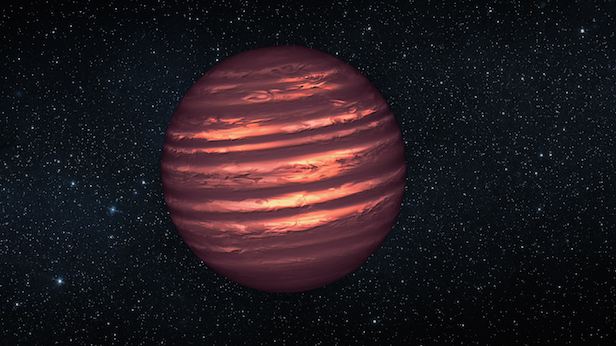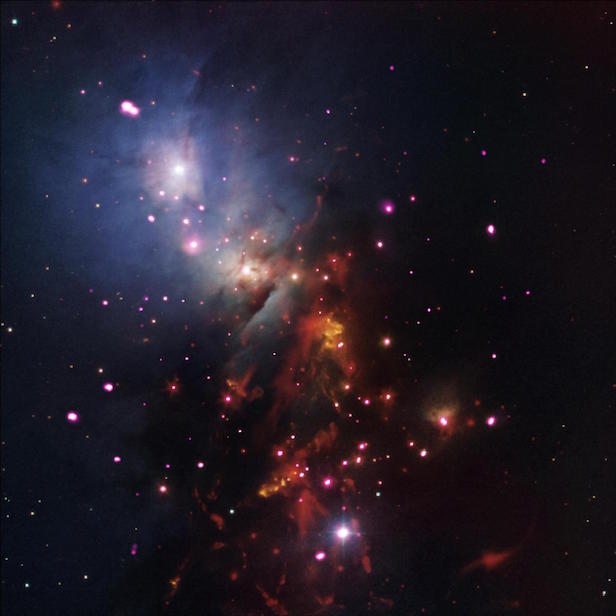James Webb Space Telescope will hunt down brown dwarfs
Astronomers hope to understand the elusive object that forms a bridge between stars and planets

Brown dwarfs did not have mass originally to initiate nuclear fusion, thus producing intense starlight. Image credit: NASA/ESA/JPL
When NASA’s James Webb Space Telescope (JWST) is eventually hoisted into space, it will open a floodgate of new astronomical observations regarding prospects that were previously hidden. From this, astronomers hope to use the amazing infrared capabilities of the JWST to examine the baffling nature of brown dwarfs. These objects are a grey area between stars and planets, as their dimly light presence can’t satisfy the criteria of either a star of a planet. The curious nature of brown dwarfs make us question our current understanding of star formation, which is what the JWST could help reveal.
There are many teams of astronomers wishing to use JWST to study brown dwarfs, as they hope to get to the bottom of understanding star formation and exoplanet atmospheres. Between stars and planets is where brown dwarfs lie, as early in their life they did not have enough mass to instigate nuclear fusion and radiate starlight, despite having up to 70 times the mass of Jupiter. These stellar outcasts were theorised in the 1960s, but weren’t confirmed until 1995, because their light is incredibly dim and hard to detect. Although they have been confirmed, they’re evolution and formation is still under much dispute. For example, did they form from the contraction of gas, like stars? Or, did they form from the accretion of material in a protoplanetary disc, like planets? What we do know is that some have a companion star accompanying them, whiles others stand alone in space.
Étienne Artigau, of the Université de Montréal, will lead the team using James Webb to study a specific brown dwarf, SIMP0136. This is a low mass, young, isolated brown dwarf, which is also one of the closest to our Sun. This brown dwarf has been subject to previous interesting research, as it exhibits features of a planet whilst not being too close to the blinding light of a star. Artigau and his team have made a breakthrough about SIMP0136 previously, showing that there is evidence it has a cloudy atmosphere. They hope to continue this streak of discovery of SIMP0136 by utilising the JWST’s spectroscopic instruments to understand more about the chemical elements and compounds within this atmosphere.
“Very accurate spectroscopic measurements are challenging to obtain from the ground in the infrared due to variable absorption in our own atmosphere, hence the need for space-based infrared observation.” Artigau explains. “Also, Webb allows us to probe features, such as water absorption, that are inaccessible from the ground at this level of precision.”

The nebula NGC 1333 to home to a large number of brown dwarfs, which will hopefully be a target for the JWST. Image credit: NASA/CXC/JPL
Observations such as these will provide valuable experience and knowledge when it comes to future exoplanet observations. By carefully analysing the precise molecules in an exoplanet’s atmosphere, we will be able to determine if it’s capable to supporting life. As a planet passes in front of its host star, the JWST infrared instruments will be able pick up the chemical signatures from the tampered starlight. This is a scientific technique known as transit spectroscopy.
“The brown dwarf SIMP0136 has the same temperature as various planets that will be observed in transit spectroscopy with Webb, and clouds are known to affect this type of measurement; our observations will help us better understand cloud decks in brown dwarfs and planet atmospheres in general,” Artigau says.
Astronomer Aleks Scholz, of the University of St. Andrews, said that the search for low mass, isolated brown dwarfs were one of the early science goals suggested for the infrared telescope back in the 1990s. This is because brown dwarfs don’t emit high-energy light like normal stars, but there is still a dim afterglow from its birth. This dim glow is best seen in the infrared wavelength, hence why the JWST would be best suited to this task.
Scholz, who also leads the Substellar Objects in Nearby Young Clusters (SONYC) project, hopes to use the telescope’s Near-Infrared Imager and Slitless Spectrograph (NIRISS) to study NGC 1333 in the Perseus constellation. NGC 1333 is a nebula – a cloud of gas and dust that accommodates many stars – in which an unusually high number of brown dwarfs have been found to reside. Some of which have mass have incredibly low masses, not much heavier than Jupiter.
“In more than a decade of searching, our team has found it’s very difficult to locate brown dwarfs that are less than five Jupiter-masses – the mass where star and planet formation overlap. That is a job for the Webb telescope,” Scholz concludes. “It has been a long wait for Webb, but we are very excited to get an opportunity to break new ground and potentially discover an entirely new type of planets, unbound, roaming the Galaxy like stars.”
Keep up to date with the latest reviews in All About Space – available every month for just £4.99. Alternatively you can subscribe here for a fraction of the price!




